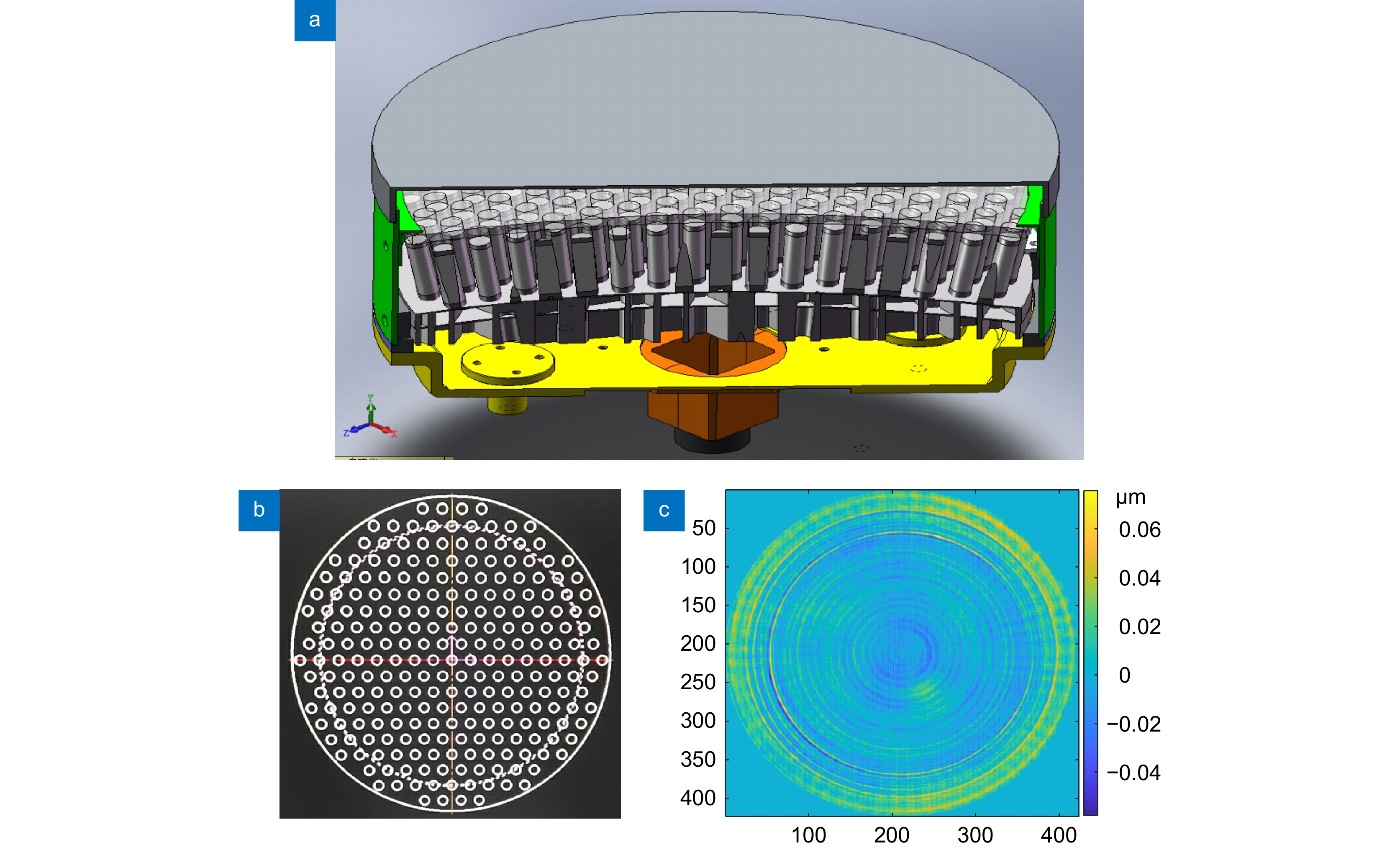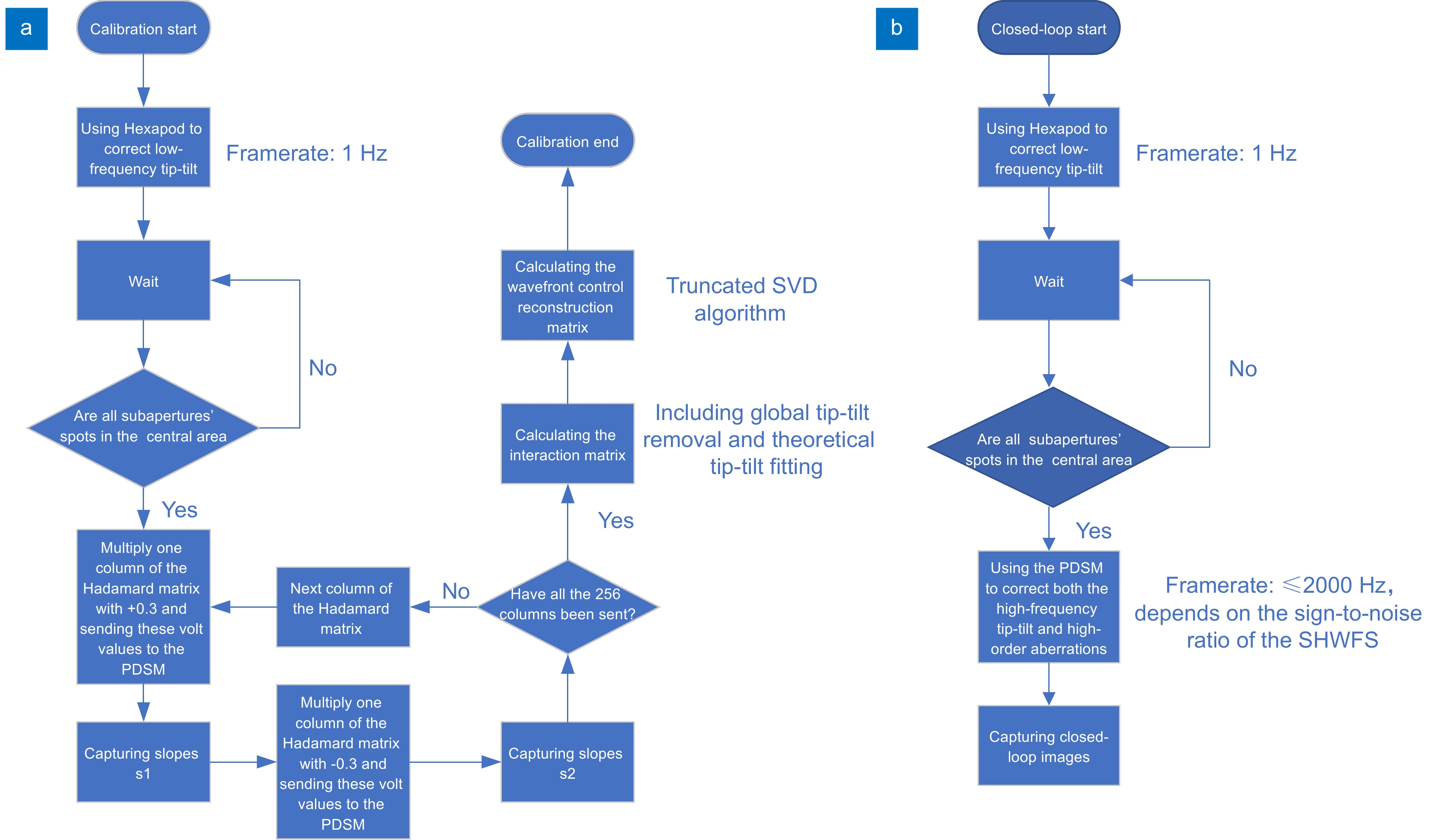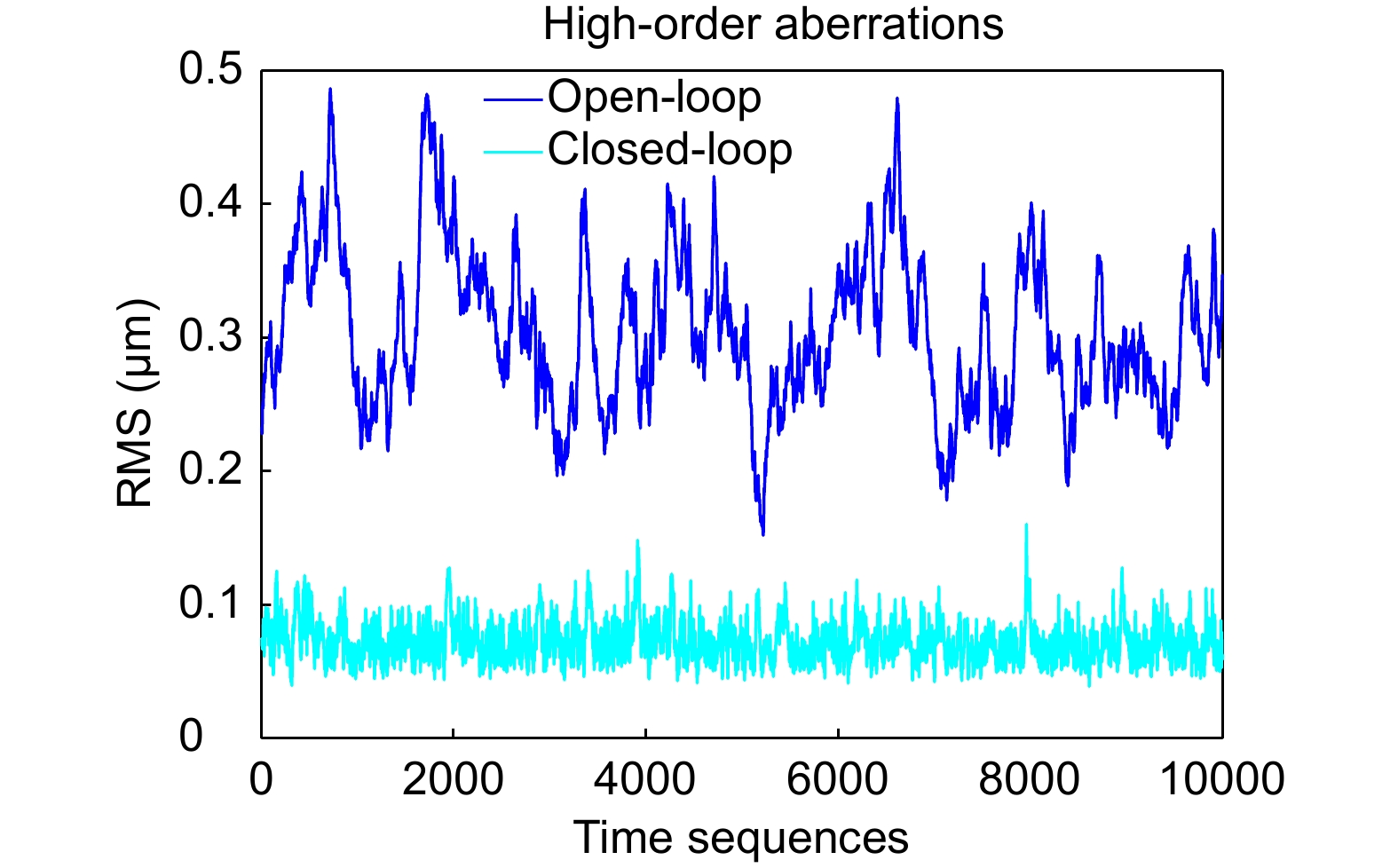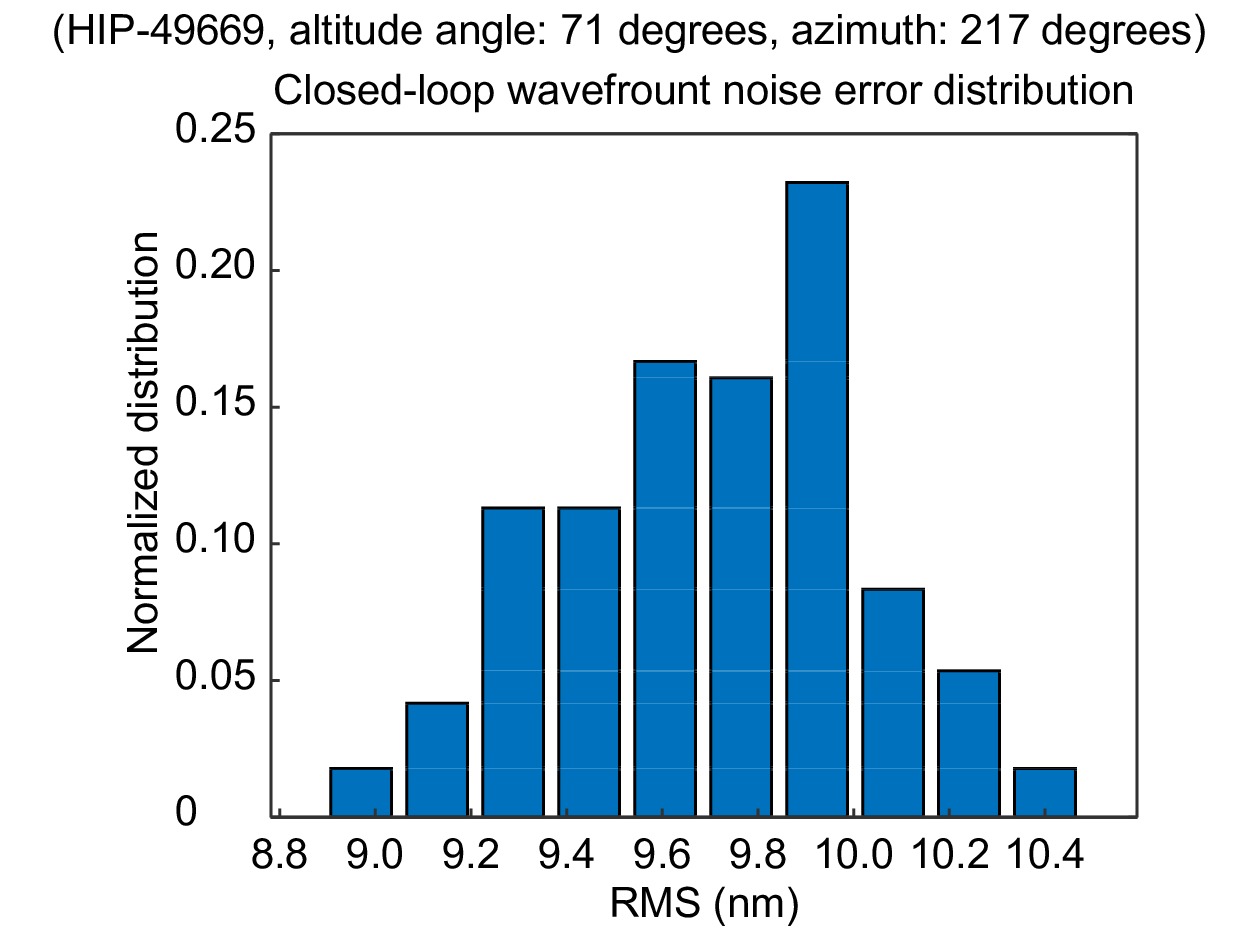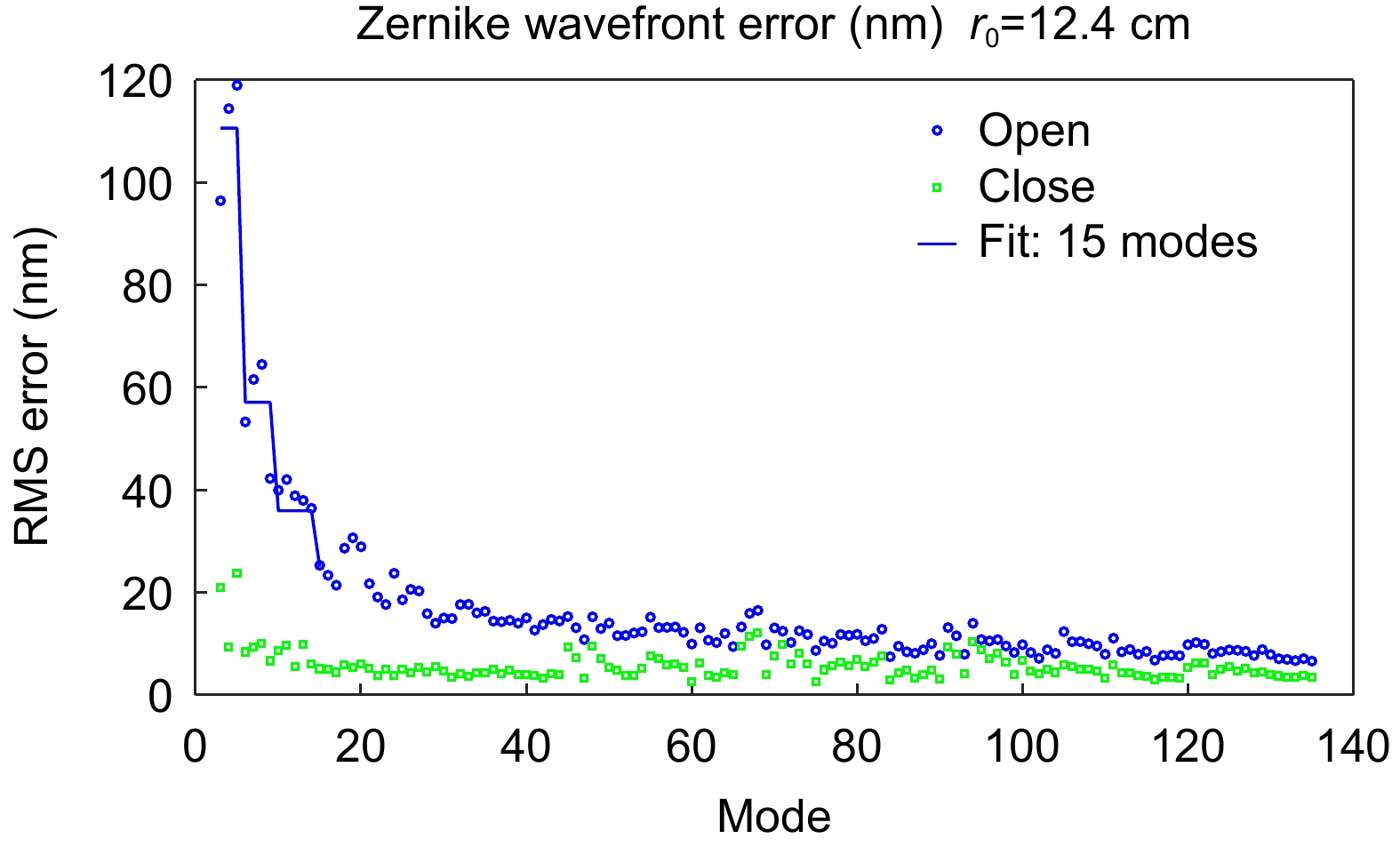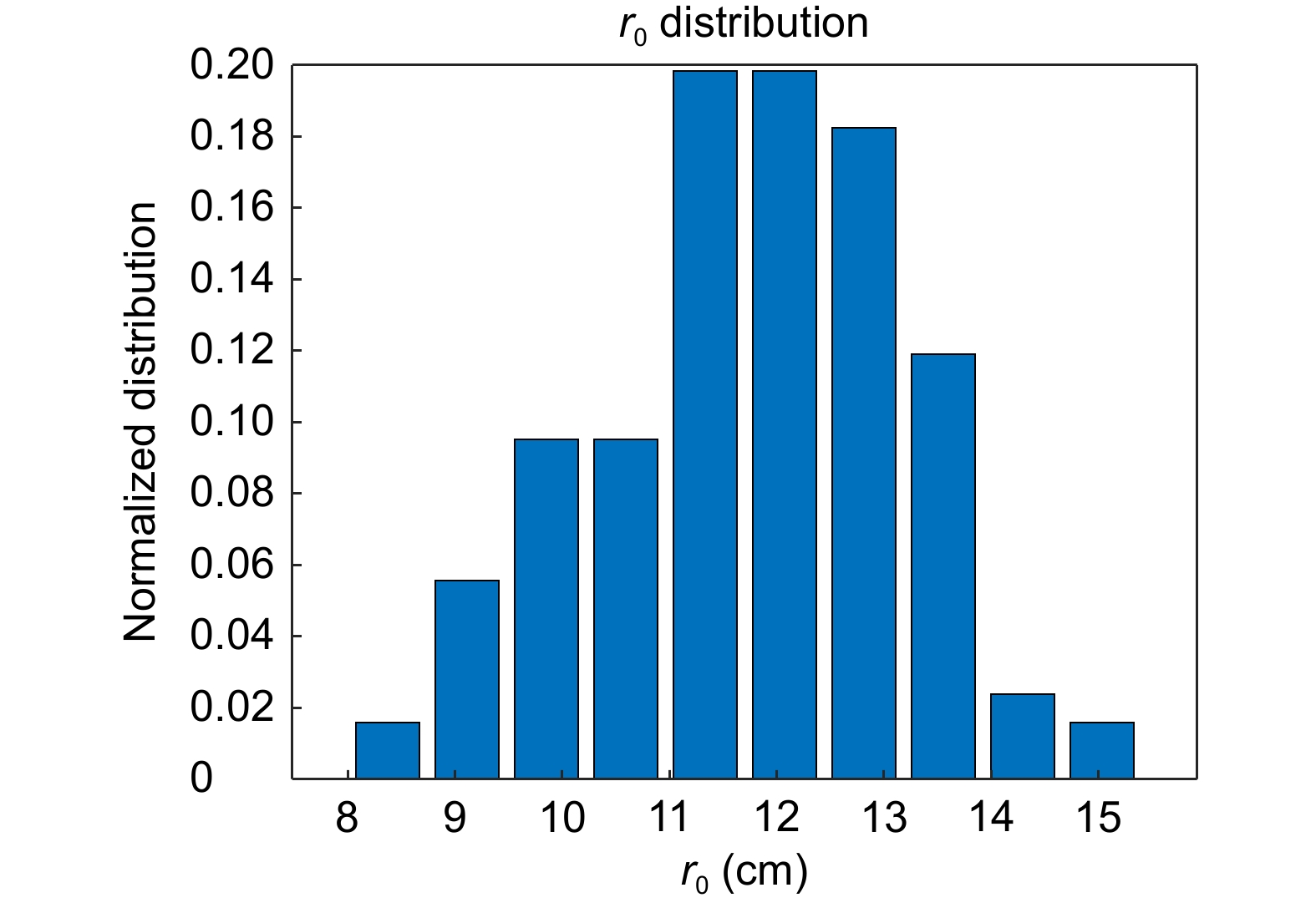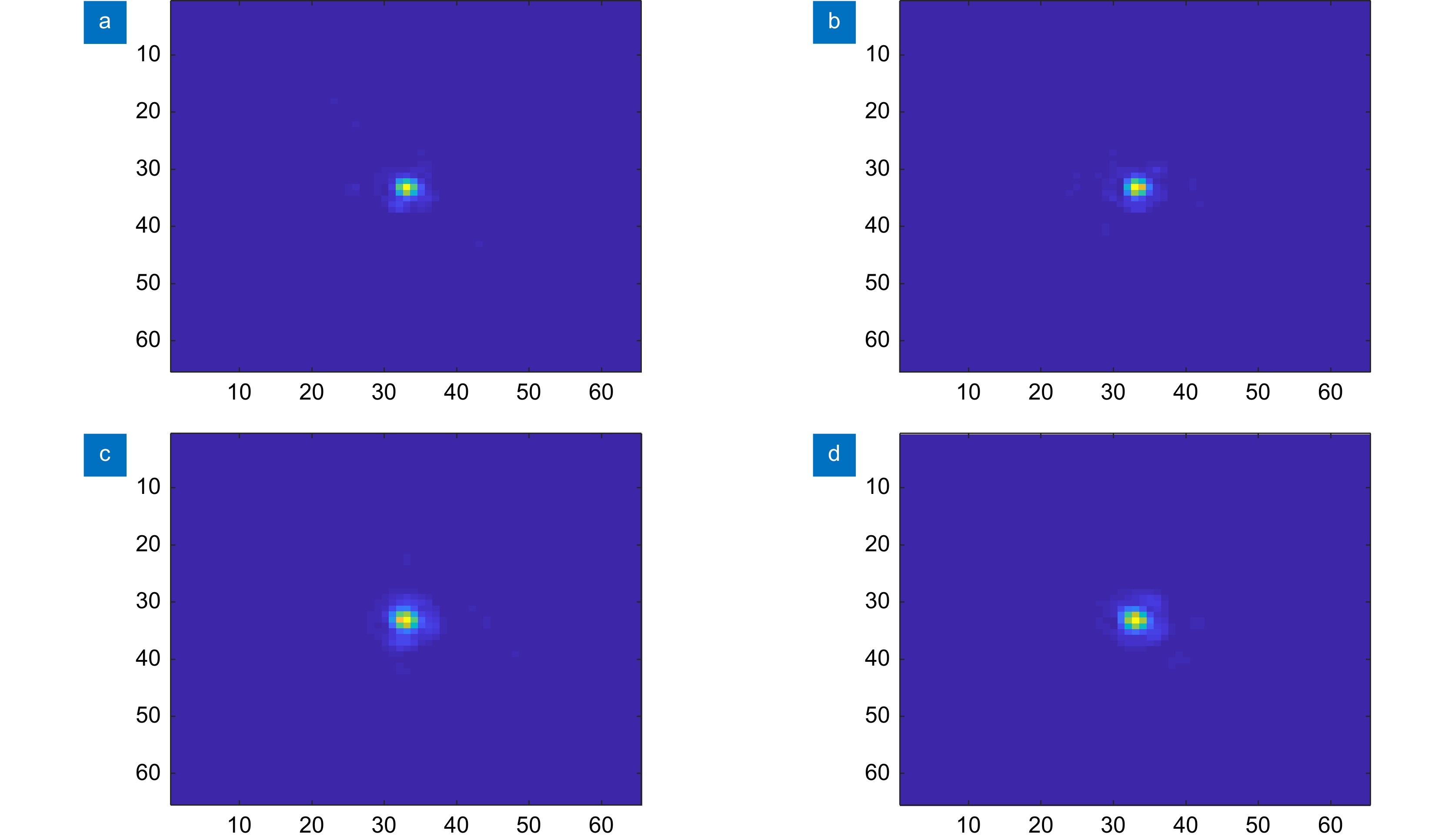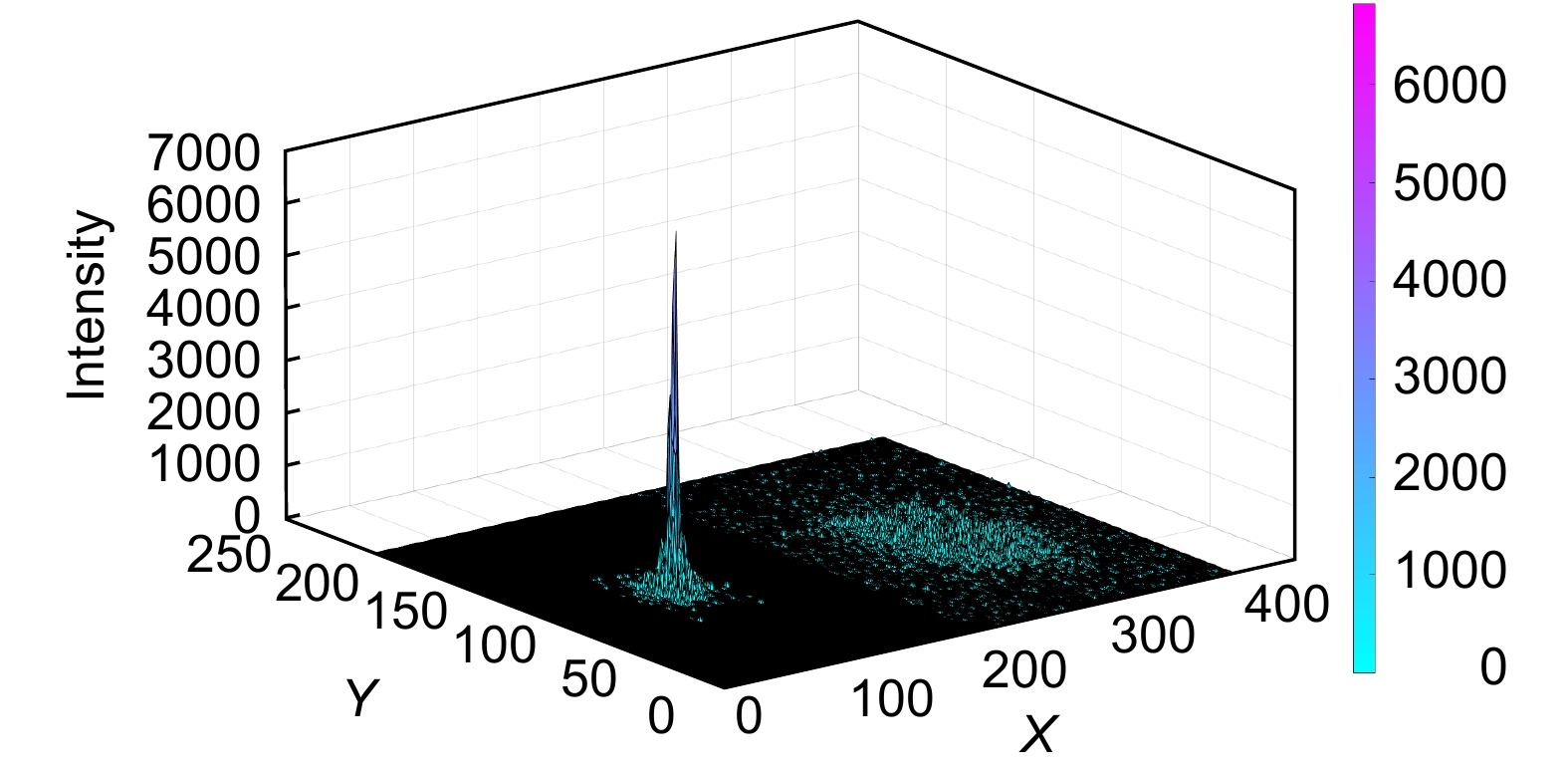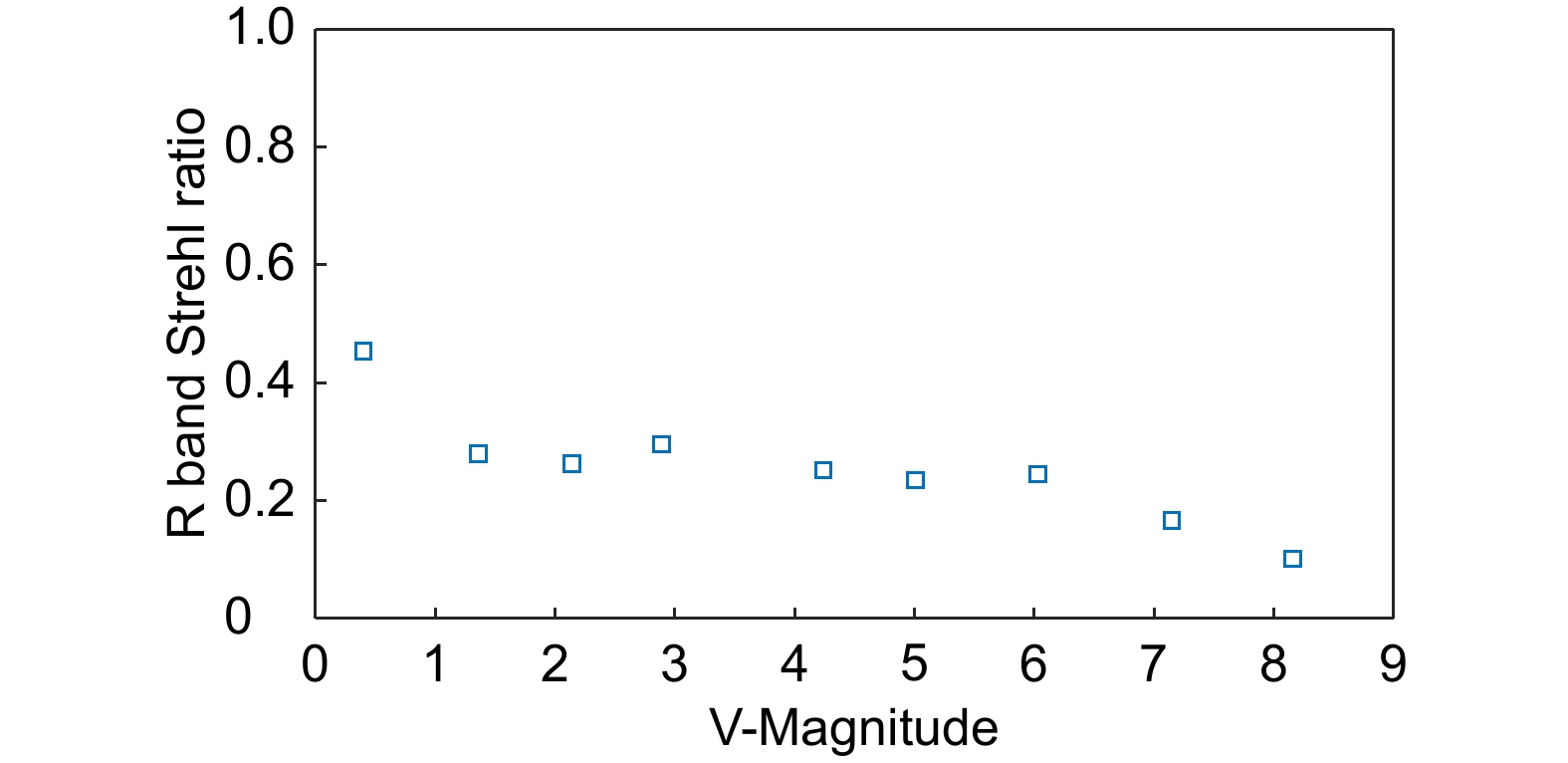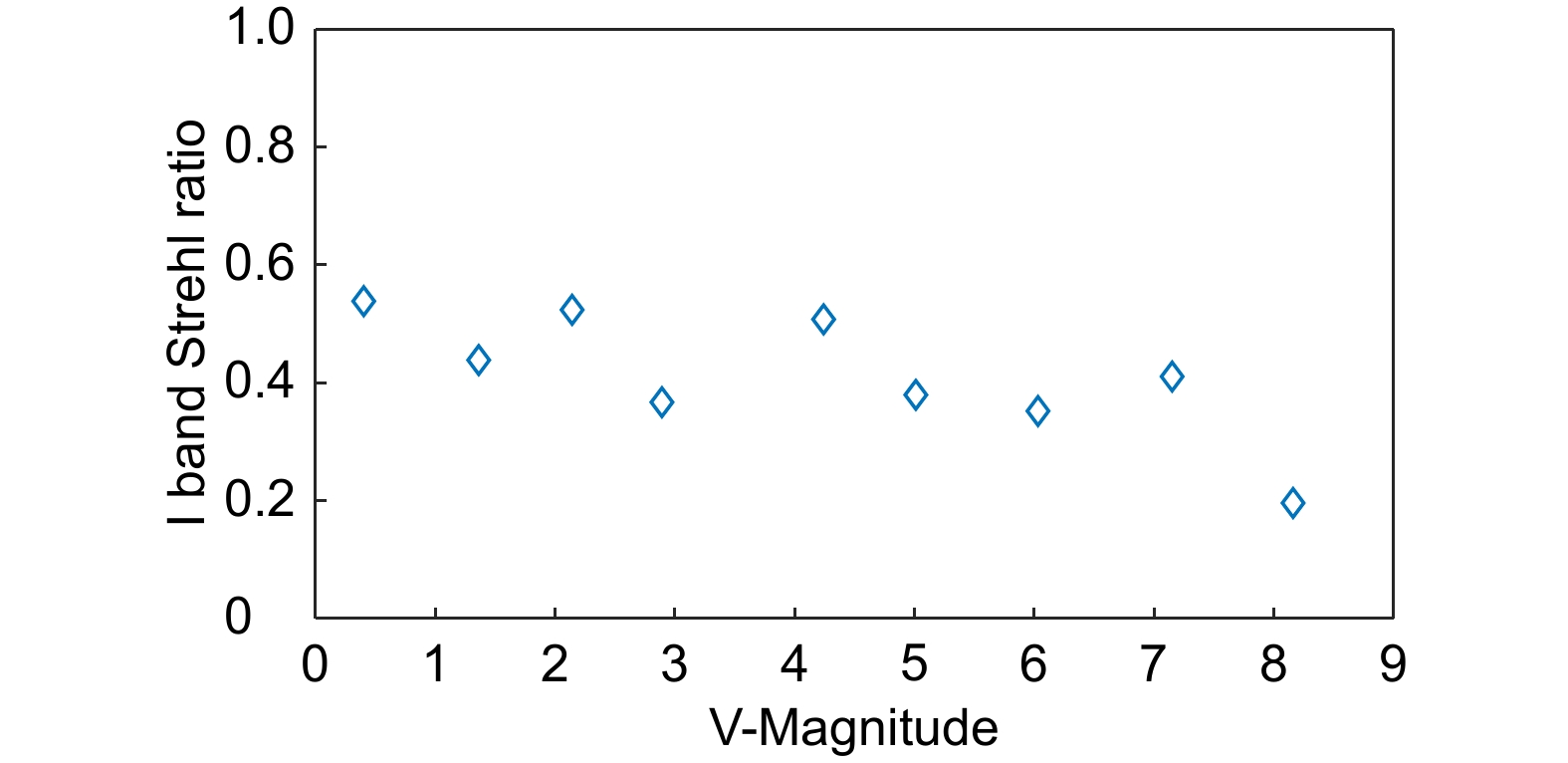| Citation: | Guo YM, Chen KL, Zhou JH, Li ZD, Han WY et al. High-resolution visible imaging with piezoelectric deformable secondary mirror: experimental results at the 1.8-m adaptive telescope. Opto-Electron Adv 6, 230039 (2023). doi: 10.29026/oea.2023.230039 |
High-resolution visible imaging with piezoelectric deformable secondary mirror: experimental results at the 1.8-m adaptive telescope
-
Abstract
Integrating deformable mirrors within the optical train of an adaptive telescope was one of the major innovations in astronomical observation technology, distinguished by its high optical throughput, reduced optical surfaces, and the incorporation of the deformable mirror. Typically, voice-coil actuators are used, which require additional position sensors, internal control electronics, and cooling systems, leading to a very complex structure. Piezoelectric deformable secondary mirror technologies were proposed to overcome these problems. Recently, a high-order piezoelectric deformable secondary mirror has been developed and installed on the 1.8-m telescope at Lijiang Observatory in China to make it an adaptive telescope. The system consists of a 241-actuator piezoelectric deformable secondary mirror, a 192-sub-aperture Shack-Hartmann wavefront sensor, and a multi-core-based real-time controller. The actuator spacing of the PDSM measures 19.3 mm, equivalent to approximately 12.6 cm when mapped onto the primary mirror, significantly less than the voice-coil-based adaptive telescopes such as LBT, Magellan and VLT. As a result, stellar images with Strehl ratios above 0.49 in the R band have been obtained. To our knowledge, these are the highest R band images captured by an adaptive telescope with deformable secondary mirrors. Here, we report the system description and on-sky performance of this adaptive telescope.-
Keywords:
- adaptive optics /
- deformable secondary mirror /
- visible imaging
-

-
References
[1] Rao CH, Gu NT, Rao XJ, Li C, Zhang LQ et al. First light of the 1.8-m solar telescope–CLST. Sci China Phys Mech Astron 63, 109631 (2020). doi: 10.1007/s11433-019-1557-3 [2] Jiang WH. Overview of adaptive optics development. Opto-Electron Eng 45, 170489 (2018). [3] Rao CH, Zhu L, Zhang LQ, Rao XJ, Bao H et al. Development of solar adaptive optics. Opto-Electron Eng 45, 170733 (2018). [4] Rao CH, Zhu L, Rao XJ, Zhang LQ, Bao H et al. Instrument description and performance evaluation of a high-order adaptive optics system for the 1m new vacuum solar telescope at Fuxian solar observatory. Astrophys J 833, 210 (2016). doi: 10.3847/1538-4357/833/2/210 [5] Wang JY, Guo YM, Kong L, Zhang LQ, Gu NT et al. Automatic disturbance identification for linear quadratic Gaussian control in adaptive optics. Mon Not R Astron Soc 496, 5126–5138 (2020). doi: 10.1093/mnras/staa1698 [6] Kim D, Choi H, Brendel T, Quach H, Esparza M et al. Advances in optical engineering for future telescopes. Opto-Electron Adv 4, 210040 (2021). doi: 10.29026/oea.2021.210040 [7] Guo YM, Zhong LB, Min L, Wang JY, Wu Y et al. Adaptive optics based on machine learning: a review. Opto-Electron Adv 5, 200082 (2022). doi: 10.29026/oea.2022.200082 [8] Beckers JM. Adaptive optics for astronomy: principles, performance, and applications. Annu Rev Astron Astrophys 31, 13–62 (1993). doi: 10.1146/annurev.aa.31.090193.000305 [9] Wildi FP, Brusa G, Lloyd-Hart M, Close LM, Riccardi A. First light of the 6.5-m MMT adaptive optics system. Proc SPIE 5169, 17–25 (2003). doi: 10.1117/12.507687 [10] Esposito S, Riccardi A, Pinna E, Puglisi A, Quirós-Pacheco F et al. Large binocular telescope adaptive optics system: new achievements and perspectives in adaptive optics. Proc SPIE 8149, 814902 (2011). doi: 10.1117/12.898641 [11] Morzinski KM, Close LM, Males JR, Kopon D, Hinz PM et al. MagAO: Status and on-sky performance of the Magellan adaptive optics system. Proc SPIE 9148, 914804 (2014). [12] Briguglio R, Quirós-Pacheco F, Males JR, Xompero M, Riccardi A et al. Optical calibration and performance of the adaptive secondary mirror at the Magellan telescope. Sci Rep 8, 10835 (2018). doi: 10.1038/s41598-018-29171-6 [13] Briguglio R, Xompero M, Riccardi A, Andrighettoni M, Pescoller D et al. Optical calibration and test of the VLT Deformable Secondary Mirror. In Proceedings of the Third AO4ELT Conference (2013);https://doi.org/10.12839/AO4ELT3.13507. [14] Guo YM, Zhang A, Fan XL, Rao CH, Wei L et al. First on-sky demonstration of the piezoelectric adaptive secondary mirror. Opt Lett 41, 5712–5715 (2016). doi: 10.1364/OL.41.005712 [15] Guo YM, Zhang A, Fan XL, Rao CH, Wei L et al. First light of the deformable secondary mirror-based adaptive optics system on 1.8m telescope. Proc SPIE 9909, 99091D (2016). [16] Kuiper S, Jonker WA, Maniscalco MP, Priem H, Coolen C et al. Adaptive secondary mirror development for the UH-88 telescope. In 6th International Conference on Adaptive Optics for Extremely Large Telescopes, (2019). [17] Hippler S. Adaptive optics for extremely large telescopes. J Astron Instrum 8, 1950001 (2019). doi: 10.1142/S2251171719500016 [18] Pedichini F, Stangalini M, Ambrosino F, Puglisi A, Pinna E et al. High contrast imaging in the visible: first experimental results at the Large Binocular Telescope. Astron J 154, 74 (2017). doi: 10.3847/1538-3881/aa7ff3 [19] Close LM, Males JR, Morzinski K, Kopon D, Follette K et al. Diffraction-limited visible light images of orion trapezium cluster with the magellan adaptive secondary adaptive optics system (MagAO). Astrophys J 774, 94 (2013). doi: 10.1088/0004-637X/774/2/94 [20] Guo YM, Wu Y, Li Y, Rao XJ, Rao CH. Deep phase retrieval for astronomical Shack–Hartmann wavefront sensors. Mon Not R Astron Soc 510, 4347–4354 (2022). doi: 10.1093/mnras/stab3690 [21] Kasper M, Fedrigo E, Looze DP, Bonnet H, Ivanescu L et al. Fast calibration of high-order adaptive optics systems. J Opt Soc Am A 21, 1004–1008 (2004). doi: 10.1364/JOSAA.21.001004 [22] Noll RJ. Zernike polynomials and atmospheric turbulence. J Opt Soc Am A 66, 207–211 (1976). doi: 10.1364/JOSA.66.000207 -
Access History

Article Metrics
-
Figure 1.
The sketch of the 1.8-m adaptive telescope.
-
Figure 2.
(a) The sketch of the PDSM-241. (b) Actuator layout (clear aperture: 270 mm). (c) The uncompensated aberration of PDSM-241.
-
Figure 3.
The sub-aperture layout of the SHWFS (effective diameter: 16 mm) and the image of a collimated wave.
-
Figure 4.
Control strategy of the AOS.
-
Figure 5.
(a) Flowchart of calibration of the interaction matrix. (b) Closed-loop wavefront control.
-
Figure 6.
Temporal high order RMS error with AO system on and off at the time (UT) 14:00 on April 28, 2022. (HIP–49669, altitude angle: 71 degrees, azimuth: 217 degrees).
-
Figure 7.
Residual wavefront error distribution at the time (UT) between 13:30 and 16:15 on April 28, 2022.
-
Figure 8.
Closed-loop wavefront noise error distribution at the time (UT) between. 13:30 and 16:15 on April 28, 2022.
-
Figure 9.
Image motion comparison with the AO system on and off. x-tilt: Open-loop: 0.4", Closed-loop: 0.015" (left panel); y-tilt: Open-loop: 0.21", Closed-loop: 0.017" (right panel)
-
Figure 10.
PSD of tracking error in open-loop and closed-loop with the AO system on and off. x-tilt (left panel) and y-tilt (right panel).
-
Figure 11.
PSD of AO system in open-loop and closed-loop (left panel), error transfer function (right panel).
-
Figure 12.
Comparison of the Zernike RMS error in open-loop (circle) and closed-loop (square). The solid curve is the fitting of the Kolmogorov turbulence model to the open-loop data.
-
Figure 13.
The distribution of r0 at the time (UT) between 13:51 and 14:08 on April 28, 2022.
-
Figure 14.
The visible short exposure images of the star HIP49669 (2022-04-28), the images are displayed in linear scale and the peaks are normalized to 1. (a) R-band, SR=0.491, FWHM = 0.0937”. (b) R-band, SR=0.481, FWHM = 0.0953”. (c) I-band, SR=0.574, FWHM=0.113”. (d) I-band, SR = 0.582, FWHM=0.111”.
-
Figure 15.
Comparison of I-band closed-loop (left) and open-loop (right) image of the star HIP63418 (V-magnitude: 8.16).
-
Figure 16.
R band (~640 nm) closed-loop Strehl ratios with guide stars of different magnitudes.
-
Figure 17.
I band (~860 nm) closed-loop Strehl ratios with guide stars of different magnitudes.

 E-mail Alert
E-mail Alert RSS
RSS
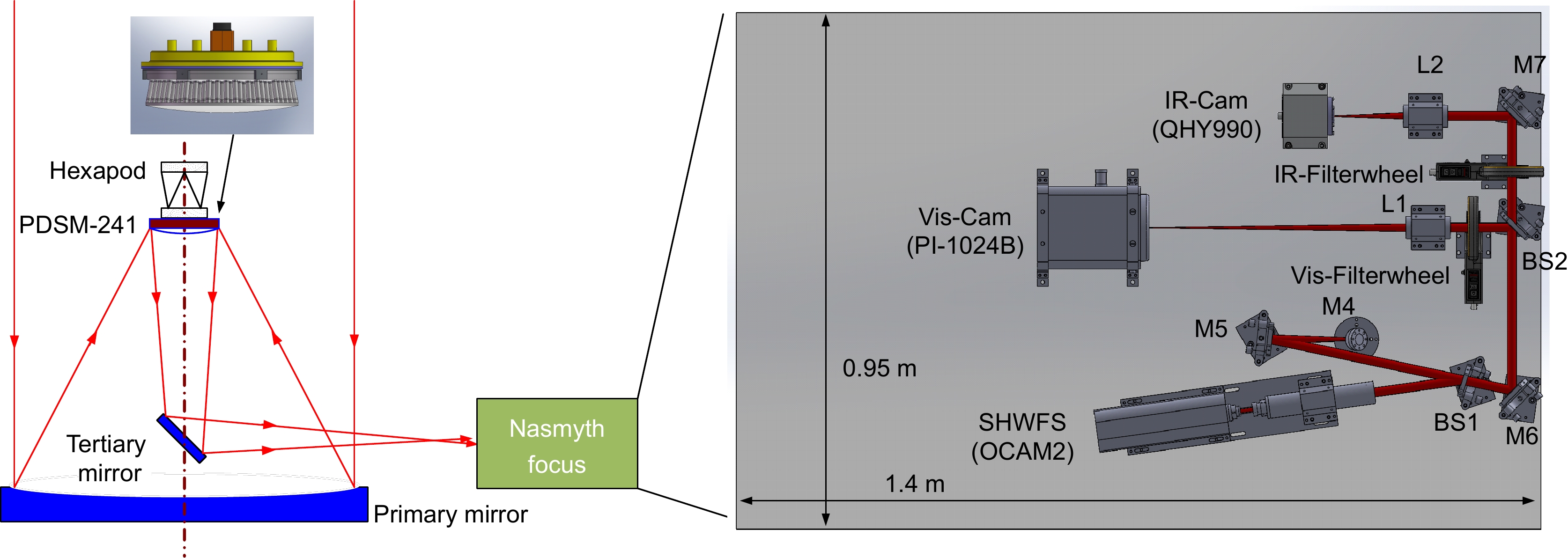


 DownLoad:
DownLoad:
